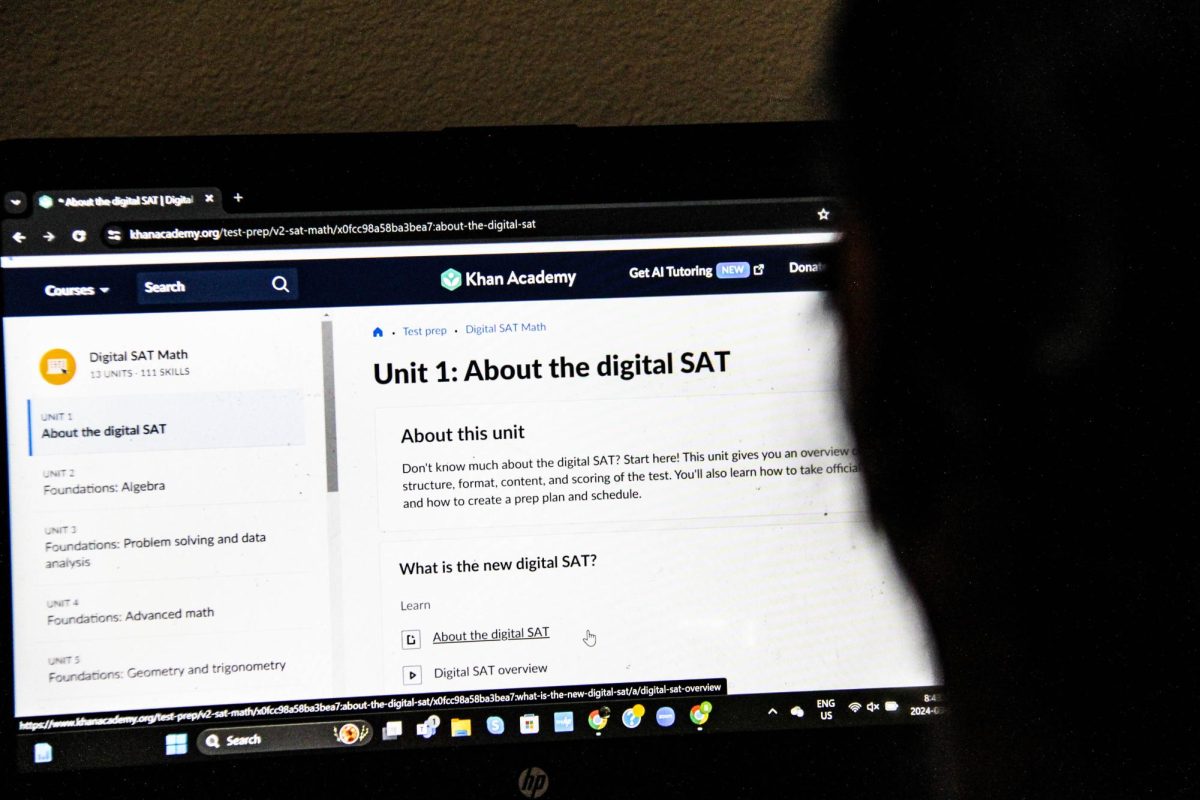A new format, new studying habits, and high goals await as students meticulously prepare for the upcoming SAT exam. With high goals, these students are constantly grinding and following a strict practice schedule to help them achieve their goals and try to get into some of the best schools for the country.
On March 6, juniors will be taking the school-wide digital SAT exam during the school day from the morning to the end of PIT. This test will be an official test, and the first school-administered digital SAT after the College Board announced the full transition in Jan. 2022.
“I usually study on the weekends and I’ve been preparing for it probably about a couple of months now, since December,” said junior Jerome Lee.
Junior Celina Yang is preparing no different. She’s working towards her goal of getting a score higher than 1520, and is thinking about UT Austin as her target school.
“I’ve been studying since last year; I started in the summer but it’s kind of been on and off,” Yang said. “I’ll do some Khan Academy a couple of hours every week, like one or two times per week.”
Some other resources mentioned by these students include the SAT/College Board Website, Bluebook, and College Panda Math. Taking the PSAT at school on October 24, 2023, has also helped some juniors feel better about their preparation methods and taking the SAT.
“I feel pretty confident since my PSAT score was pretty high, but I’m hoping to get the SAT score even higher,” said junior Samuel Kim.
Celina also feels better after taking the school PSAT, as this was a way for her to preview the new format implemented this year for the SAT.
“It made me feel more prepared because I got to see what the test was like and feel how it’s more similar to this,” said Yang.
Most students like this format change for this nation-wide test, and feel this will be easier to adapt to for this current generation.
“I think it’s [digital SAT test] very fitting and it’s a change that should have been made a bit sooner,” said Lee.
Junior Ninaad Nair doesn’t feel any different, but believes that one specific aspect of this change might be a key changing point and will be interesting to see.
“I think it’s a cool change especially because on the paper test, it doesn’t change difficulty, but on the digital, at least for the PSAT, it changed the difficulty as it was split into two sections,” said Nair.
Kim pointed out another aspect and change in the digital SAT that could help many students with a particular section to increase their scores.
“I think the math section is a lot easier because of the Desmos calculator,” said Kim, “I think the reading section is going to be a lot more manageable since they made the passages shorter.”
Although the paper SAT and the digital SAT have a couple of differences, students aren’t making major changes to their practice routines.
“I’m preparing for this one [using] more digital SAT-focused questions instead of the general grinding math problems and reading passages,” said Kim.
Lee changed his practice methods to a very similar way as Samuel.
“Since it’s digital, I took more digital practice SATs from the SAT website,” said Lee.
Ninaad Nair’s top goal would be to get into MIT or Princeton, both requiring high scores with a minimum of 1450 (1450-1570 for Princeton; 1510-1580 for MIT), but his goal for the SAT score is to go all the way.
“I am going to try for a 1600,” said Nair.









